Episode #426: Inside One District’s Journey to Define Math Critical Thinking
LISTEN NOW HERE…
WATCH NOW…
Your math vision prioritizes critical thinking, but can everyone on your team describe what that actually looks like in classrooms?
In this episode, you’ll sit in on a real conversation between our team as we unpack a problem of practice. Yvette shares her experience coaching a large district where critical thinking appears in their math vision but isn’t yet clearly defined across their leadership team. We reflect on a district that’s working toward coherence by focusing on problem solving, discourse, and fluency. You’ll hear how shared mathematical experiences are helping leaders connect their instructional goals to what students say and do. We also explore a powerful classroom moment from the film Counted Out, where students debated the real-world impact of COVID-19 using exponential thinking. It’s a vivid reminder of how math can fuel critical thinking when the conditions are right.
We’ll explore:
- How to define math critical thinking using the simple frame: thinking carefully, questioning deeply, deciding wisely
- Why the Ontario curriculum connects critical thinking to social-emotional learning and what that means for classroom practice
- A strategy Yvette uses in leadership sessions: engaging instructional teams in mathematical experiences and reflecting together on where the vision lives in their actions
- The importance of moving beyond shared language to shared experience
If your district has a strong math vision but you’re still working toward system-wide clarity, this episode offers a grounded look at how to build it — one shared experience at a time.
Press play and reflect on how your own team is defining and supporting math critical thinking.
Attention District Math Leaders:
Not sure what matters most when designing math improvement plans? Take this assessment and get a free customized report: https://makemathmoments.com/grow/
Ready to design your math improvement plan with guidance, support and using structure? Learn how to follow our 4 stage process. https://growyourmathprogram.com
Looking to supplement your curriculum with problem based lessons and units? Make Math Moments Problem Based Lessons & Units
Be Our Next Podcast Guest!
Join as an Interview Guest or on a Mentoring Moment Call
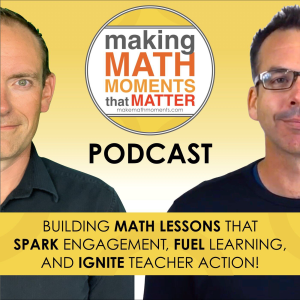
Apply to be a Featured Interview Guest
Book a Mentoring Moment Coaching Call
Are You an Official Math Moment Maker?
FULL TRANSCRIPT
Yvette Lehman: One of the things that I’ve striving to deeply understand lately is this concept of critical thinking because that term lives within many of our district’s vision statements. When we ask about their moral purpose, the why behind the work that they’re doing, oftentimes it’s because we want to position students as critical thinkers. And that made me wonder. How are we defining critical thinking? How do we notice and name the behaviors of someone who is engaged in critical thinking? Do we deeply understand or are we using that term vaguely?
Jon Orr: Well, so, yes, and I know most, I would say most of our teams that we’re supporting right now with the visions that they’ve all created, most will include a version of critical thinking. We also see a lot of fluency, but what’s specifically troubling you? Like what’s the pebble rattling around in your shoe right now when it comes to unpacking critical thinking with the teams we’re supporting?
Yvette Lehman: I guess what I’m struggling with is making sure that I confirm my own understanding of what I mean when I say critical thinking. know, confirming that I have ⁓ a deep understanding of what that term is really trying to capture. And that’s where I looked to the Ontario curriculum to see, you know, how are they defining critical thinking and what are the observable behaviors of a student who owns this process? I love the idea of, you know, critical thinking being defined as questioning, thinking deeply and deciding wisely. Ultimately, we’re, and that’s why interestingly enough, critical thinking falls under the social learning skills of the math curriculum because it does position us as social actors to make informed decisions in a society where we’re bombarded by information constantly. So I think that the reason I’m, interested in this topic right now is that if this is an idea that lives within our visions, it’s something that’s a guiding principle for the work that we want to do, the conditions we want to create, the experiences and outcomes we want for students, are we creating enough opportunities to really internalize critical thinking, to notice and its behaviors and know how to say that’s an example of critical thinking living and breathing in our classrooms today?
Jon Orr: Yeah. Do have an example you’re working with?
Yvette Lehman: Okay, so we do have a district, although I could probably list many districts that would have a similar type of statement. So the one district that we’re working with currently, their vision is students actively engage in a dynamic learning environment that fosters confidence, critical thinking and curiosity. So that is their vision that they, you know, guide decision making. It’s their moral purpose, the why behind the work that they do collectively to strengthen math, teaching and learning. They have three objectives in this district, one around problem solving, one around fluency, and one around mathematical discourse. And so, you know, their belief is that if we strengthen fluency, strengthen problem solving, strengthen discourse, then students will have the outcome defined in their vision. That will be their mathematical experience.
Kyle Pearce: Hmm. I like that. Yeah, like when I’m looking at that, and I love the simple definition that thinking carefully, questioning deeply, and deciding wisely is like if, in a way, if we’re focusing on those even three things, right? So if we were to break critical thinking down into those three things and we try to do that as often as possible in our math classroom, what I’m sort of like, seeing in my mind here is like, you’re gonna have a classroom experience where we’re not just getting the work done. know, there’s a lot of thinking, we’re gonna be questioning what we do and why we’re doing it. And that probably also speaks to the discourse thing. So you’re probably having conversations with those around you. And then you’re making decisions based on those experiences and those discussions. you know, when I look at, the type of math classroom that we’re trying to build and the districts that we work with are trying to build most often, like in a way it’s like critical thinking is happening almost all the time in those types of classrooms, right? Like where you’re not seeing a whole lot of students just cranking out the answers to things. It’s like, there’s always a reason why we’re doing it. There’s always something to explain or justify and really You know, I guess as like a ⁓ self-proclaimed fact finder, like I love going down the rabbit hole. It’s like making sure there’s no stones overturned in the math classroom, right? Like that we didn’t miss something here. Like those experiences when we’re solving problems and we’re really wanting to make sure that we feel confident in that final answer in order to get to that end goal of feeling confident in what you’ve done. I feel like the act of critical thinking has helped you to get there because if someone were to challenge you on that answer, you’re able to go backwards and sort of, you know, help explain and, know, all of the things that you’ve been thinking about and questioning yourself, like you’ve already kind of thought those things through and therefore that is sort of helping you to sort of justify your case and explain your thinking along the way. So I said a lot there, which means how do you make that more ⁓ package size, right, for all educators across a district to like speak the same language and feel the same way?
Jon Orr: Well, Well, let me ask you this, Yvette. Do you feel like the district with this vision is doing the work to obtain the vision?
Yvette Lehman: I that’s a loaded question. think yes, I think that work is happening in pursuit of this vision that they have for the mathematical experience. But what I can’t confidently say right now is whether all instructional leaders within this district have a shared understanding of what we mean by critical thinking. don’t have enough information to confidently say that. Do I think we’re strengthening problem solving? Sure. Fluency? Yes. Discourse? Yes. I think those things are happening. But do we have a shared collective understanding of this idea of what critical thinking looks like when it’s being done effectively and it’s being fostered in every classroom? I don’t know. And I guess that’s what I am questioning. How do we create experiences for instructional leaders to live and breathe the behaviors of critical thinking, observe them in student actions and listening to what students are saying so that we are well positioned to know when the vision has been achieved.
Jon Orr: Yeah, yeah, like to me, because that’s the work, think. I think we could always say, if you could pick one thing, right? If critical thinking is where you wanna improve, you could spend, and you probably need to spend, a year trying to make sure there’s coherence around what you mean by critical thinking, what this looks like. And you have to, and this is the recommendation, right? You have to, no matter what seat I am in, if I’m in a school, if I’m a school leader, whether that’s a department head or whether that’s a principal or whether that’s a math lead or maybe I’m a math coach or maybe I’m in a seat at the district level. I’m a math coordinator or I’m a curriculum coordinator or maybe I’m a superintendent or I’m in charge of the coaching team or the math action team. I’m kind of leading that. I think no matter where you sit is you have to view these as fractal levels. You have to view that as that if If I’m trying to strengthen critical thinking or, I’m going to do it through these objectives, then, then we need to make sure that we are communicating what that means and what that should look like. Like we have to get clear. Like we’ve talked about the puzzle. We have to clearly define the puzzle for ourselves, our teams, and then give those puzzle experiences to the different teams that will be supported or will support. So oftentimes we, we miss the leadership. We focus on what can we give teachers. But if sustainability around critical thinking or around whatever that term that you want to be is essential component of your mathematical vision, if we think that that’s going to live inside our schools and our school or our classrooms, then we have to say, where does that live? We have to make sure that the people that are supporting those experiences for teachers and students, also have to have that shared understanding, which means we need to make sure that our administrators know what that looks like, sounds like. We need to make sure our coaches and our math task forces and our support teachers, and it sounds like a lot, because it is. And that’s why we always recommend to go narrow, because there’s a lot to do. And it’s like, but we get too caught up in switching focuses all the time and staying too lofty. It’s like, if you could only do one thing, which was just get clarity and coherence around what critical thinking looks like in your classrooms and give everyone a glimpse of what that could be like everyone consistently. That’s like noble work, important work. And it’s going to be lasting work. And it would last you five years, like it’s going to last you long enough to be like, we’re still there. And it’s important work. So we’re still there. It’s important workers, we’re still there. And we’re still there because we’re measuring the right things to see it that we still need to make work on there. But like but that’s not important. We talk about that noble component of your vision. That’s the guiding light. You’re never gonna back away from that. So what does it look like? It looks like giving as many people experiences without letting your foot up off the gas. There’s my soapbox event.
Yvette Lehman: I I wonder too if it needs to be a two-tier approach. And what I mean by that is, so, you know, my husband works in a school district where they’ve been working on universal design. for years, you two years of dedicated professional development where they’ve had shared experience coming together around what does universal design mean? What does it look like? What does it sound like? What are the pillars? And it’s been a lot of, you know, pull out PD professional development, guest speakers, videos, examples. But I think the piece that maybe was missing for him is then the application for his role tomorrow. What is he changing? and race.
Jon Orr: It’s totally a tiered approach. Because it’s like, hey, if I’m going to just blast everybody with the idea, but then I’m not going to go to Gemba. We’ve used that term in our blog post recently and in the last year or so, which is like, it’s a Japanese term basically saying go and see the work. Right? Like if you’re not getting into the work and actually getting down to like, what do I need to, like there’s pebbles here. We blasted everybody here because it’s so important. But how do I help this group? How do I help that group see it? How do I help this group see it? If you’re not planning to do that work, that means you have to get into the Gemba. You have to go to the Gemba to see the work in action so that you are in better position to clear those pebbles. Like sometimes you just need to see yourself as like, as a leader of education, your job is to just clear barriers. know, like where, like I got my vision, I’ve got our goals, like what barriers can I clear? there’s a barrier there. Let’s clear that out of the way. There’s a barrier there with our support staff. Let’s clear that up. There’s a barrier over here. Let’s make sure there’s clarity here. And it’s just about clarity and clearing barriers. Like you can view yourself that way. Like you will get a lot accomplished.
Yvette Lehman: So let’s think about, you know, I’m coaching this district. They have critical thinking as ⁓ a pillar of the work that they’re striving to do collectively. I have an opportunity to meet with the leaders of this district. What, how am I facilitating that learning? And so one thing, I’ll share that one thing that I plan to do, and then maybe we need to talk though about this more. tangible next step thinking forward because I think that what I’ve started to do with this district is create shared experiences. Just like, you know, my husband’s experiencing around universal design, these shared experiences where we’re noticing and aiming, creating awareness. So when I work with this district and we come together with the leadership team, we engage in mathematical thinking and then we connect it to the vision and the objectives and we have. conversation about where did we, where was there evidence of fostering confidence, critical thinking and curiosity through this mathematical experience that we just engaged in? Where were there opportunities to strengthen problem solving discourse and fluency? So every time we have a shared experience, we bring it back to the vision, we bring it back to the objectives, we look for observable behaviors and habits reflected in our experience.
Jon Orr: Well, me ask you this. What’s the learning goal of the experience that you’re providing to that group? Like what do you hope the learning goal is for that group?
Yvette Lehman: My learning goal for that group is that they can see evidence of their objectives in our actions. So it’s like that experience allowed us to engage in mathematical discourse. Let’s define what we mean by mathematical discourse.
Jon Orr: Okay, so you’re saying I’m working with that group as a team. I’m at a senior level of administration in a way, and I want this group to understand what these actions look like. But is that where it stops?
Yvette Lehman: Right now, yes. Right now, that is, and that’s, guess, why I’m asking the question, right? Is that right now, what I’ve been striving to do is help the bridges, so those are the instructional leaders within this organization, internalize their objectives and their vision.
Jon Orr: Mm-hmm. Right. Right, that’s what I was thinking. It’s like, so one goal is clearly alignment and making sure that we are coherent around what this looks like, sounds like, but then it’s like, I really want them to translate and have that experience and make sure that they’re seeing the connection between the experience we just had in the debrief and the consolidation we just had to understanding the main purpose of that, but also know that the other main purpose was for them to also go like, I want to replicate this. because the importance that I just got out of this experience is an experience I need to also recreate with the educators I support. And it’s like, do we make that clear in this experience so that it translates into these experiences down here? And if not, maybe we haven’t clarified that yet, or maybe this person’s not well positioned enough yet to do that type of work, and therefore we have more work to do with the group so that it will translate.
Yvette Lehman: That’s what I was just going to ask is when you’re working with a large system, everybody’s readiness is going to differ. The number of experiences that I might need to internalize a big idea or to develop deep understanding around a particular objective or a key term within the vision might differ from yours. So when we’re trying to move an entire system, it is the facilitator’s role to gather evidence and feedback that people are well positioned to then rep, it’s not easy to replicate something we don’t deeply understand. And so I think that’s where I’m struggling and, maybe, maybe unintentionally causing more disconnect and confusion potentially, you know, if we haven’t deeply internalized what it is we’re trying to achieve.
Jon Orr: Right, true. Otherwise you’re just mimicking, right? Yeah.
Yvette Lehman: So this is the work that we’re doing. I mean, the district that I’m describing is a very large district with a lot of people positioned as instructional leaders. So there is a responsibility on the facilitators to be taking a temperature and checking in and doing that follow-up and ensuring that every facilitator who we’re asking to go on and replicate this process is well positioned to do that.
Jon Orr: All what do you believe is your next step?
Yvette Lehman: This is a great question. I think that I am committed to continuing to creating these shared experiences, but then I think that there needs to be more one-on-one coaching through the fractal process to ensure that everybody can clearly articulate the purpose. Because ultimately, if we’re not coherent, if we’re not aligned in what we’re trying to achieve through that experience, is it going to yield the results we’re striving for? I’m not sure.
Jon Orr: Mm-hmm. Yeah, yeah, and I find what the one-on-one next level down does, right, is it eliminates the hiders. It wasn’t for me, you know, like I was in a group, which is like the bystander effect, you know, like we all think they’re talking about somebody else when we’re talking about doing this next thing, but then it’s like, wait, like no, I’m now, I’m face-to-face with this person, now this is important and this is for me and therefore you can’t. You can’t hide when you have that next layer of coaching down, which is an essential component of professional development is to have that layer. Not necessarily to catch hiders, but like to have the level of support that everyone needs at that next level.
Yvette Lehman: The work continues. I like, yeah, I feel like my learning this week is that, as I mentioned, critical thinking exists in so many visions out there. It is our moral purpose for the work that we do and why we do it. But it was important for me to take the time to really understand when I say critical thinking, what do I mean by critical thinking? What behaviors am I looking for in students?
Jon Orr: Okay, stay tuned then, yeah. Yeah, yeah. And we are critical of thinking about the support we’re providing. we actively engage in reflection here today with the teams that we’re supporting on ongoing basis. Because we support school level teams, district level teams, state level teams to create math improvement plans that are sustainable, they’re aligned, they’re research based, they’re impactful and they have traction. And that type of work is… It takes critical reflection, it takes work, you know, to continually ⁓ be critical thinkers of the work that you’re doing. And you saw a little of a glimpse here for us to kind of do that together today. And it’s important work. If you want us to have a look at your system and look at your, what the work that you’re currently doing or the work that you could be doing, reach out to us. Book a discovery call. We can talk about your system. It’s over at makemathmoments.com forward slash discovery. you’re talking about the work you’re doing maybe tomorrow and other than that we’ll talk to you in the next episode
Thanks For Listening
- Book a Math Mentoring Moment
- Apply to be a Featured Interview Guest
- Leave a note in the comment section below.
- Share this show on Twitter, or Facebook.
To help out the show:
- Leave an honest review on iTunes. Your ratings and reviews really help and we read each one.
- Subscribe on iTunes, Google Play, and Spotify.
DOWNLOAD THE 3 ACT MATH TASK TIP SHEET SO THEY RUN WITHOUT A HITCH!
Download the 2-page printable 3 Act Math Tip Sheet to ensure that you have the best start to your journey using 3 Act math Tasks to spark curiosity and fuel sense making in your math classroom!
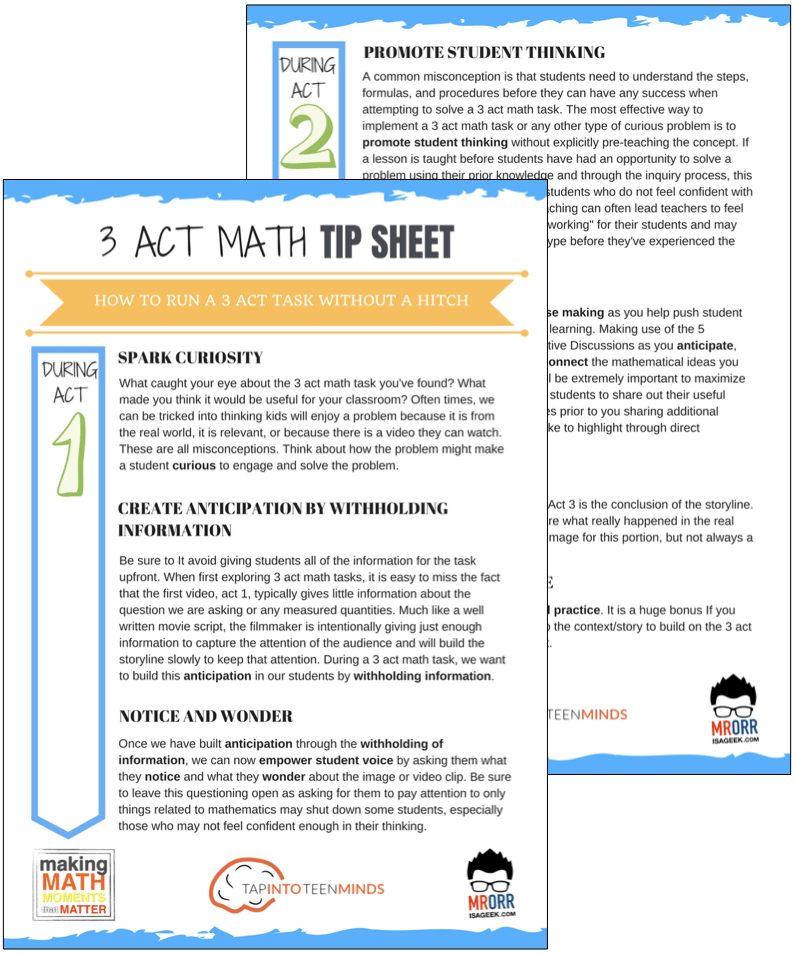
LESSONS TO MAKE MATH MOMENTS
Each lesson consists of:
Each Make Math Moments Problem Based Lesson consists of a Teacher Guide to lead you step-by-step through the planning process to ensure your lesson runs without a hitch!
Each Teacher Guide consists of:
- Intentionality of the lesson;
- A step-by-step walk through of each phase of the lesson;
- Visuals, animations, and videos unpacking big ideas, strategies, and models we intend to emerge during the lesson;
- Sample student approaches to assist in anticipating what your students might do;
- Resources and downloads including Keynote, Powerpoint, Media Files, and Teacher Guide printable PDF; and,
- Much more!
Each Make Math Moments Problem Based Lesson begins with a story, visual, video, or other method to Spark Curiosity through context.
Students will often Notice and Wonder before making an estimate to draw them in and invest in the problem.
After student voice has been heard and acknowledged, we will set students off on a Productive Struggle via a prompt related to the Spark context.
These prompts are given each lesson with the following conditions:
- No calculators are to be used; and,
- Students are to focus on how they can convince their math community that their solution is valid.
Students are left to engage in a productive struggle as the facilitator circulates to observe and engage in conversation as a means of assessing formatively.
The facilitator is instructed through the Teacher Guide on what specific strategies and models could be used to make connections and consolidate the learning from the lesson.
Often times, animations and walk through videos are provided in the Teacher Guide to assist with planning and delivering the consolidation.
A review image, video, or animation is provided as a conclusion to the task from the lesson.
While this might feel like a natural ending to the context students have been exploring, it is just the beginning as we look to leverage this context via extensions and additional lessons to dig deeper.
At the end of each lesson, consolidation prompts and/or extensions are crafted for students to purposefully practice and demonstrate their current understanding.
Facilitators are encouraged to collect these consolidation prompts as a means to engage in the assessment process and inform next moves for instruction.
In multi-day units of study, Math Talks are crafted to help build on the thinking from the previous day and build towards the next step in the developmental progression of the concept(s) we are exploring.
Each Math Talk is constructed as a string of related problems that build with intentionality to emerge specific big ideas, strategies, and mathematical models.
Make Math Moments Problem Based Lessons and Day 1 Teacher Guides are openly available for you to leverage and use with your students without becoming a Make Math Moments Academy Member.
Use our OPEN ACCESS multi-day problem based units!
Make Math Moments Problem Based Lessons and Day 1 Teacher Guides are openly available for you to leverage and use with your students without becoming a Make Math Moments Academy Member.
Partitive Division Resulting in a Fraction
Equivalence and Algebraic Substitution
Represent Categorical Data & Explore Mean
Downloadable resources including blackline masters, handouts, printable Tips Sheets, slide shows, and media files do require a Make Math Moments Academy Membership.
ONLINE WORKSHOP REGISTRATION
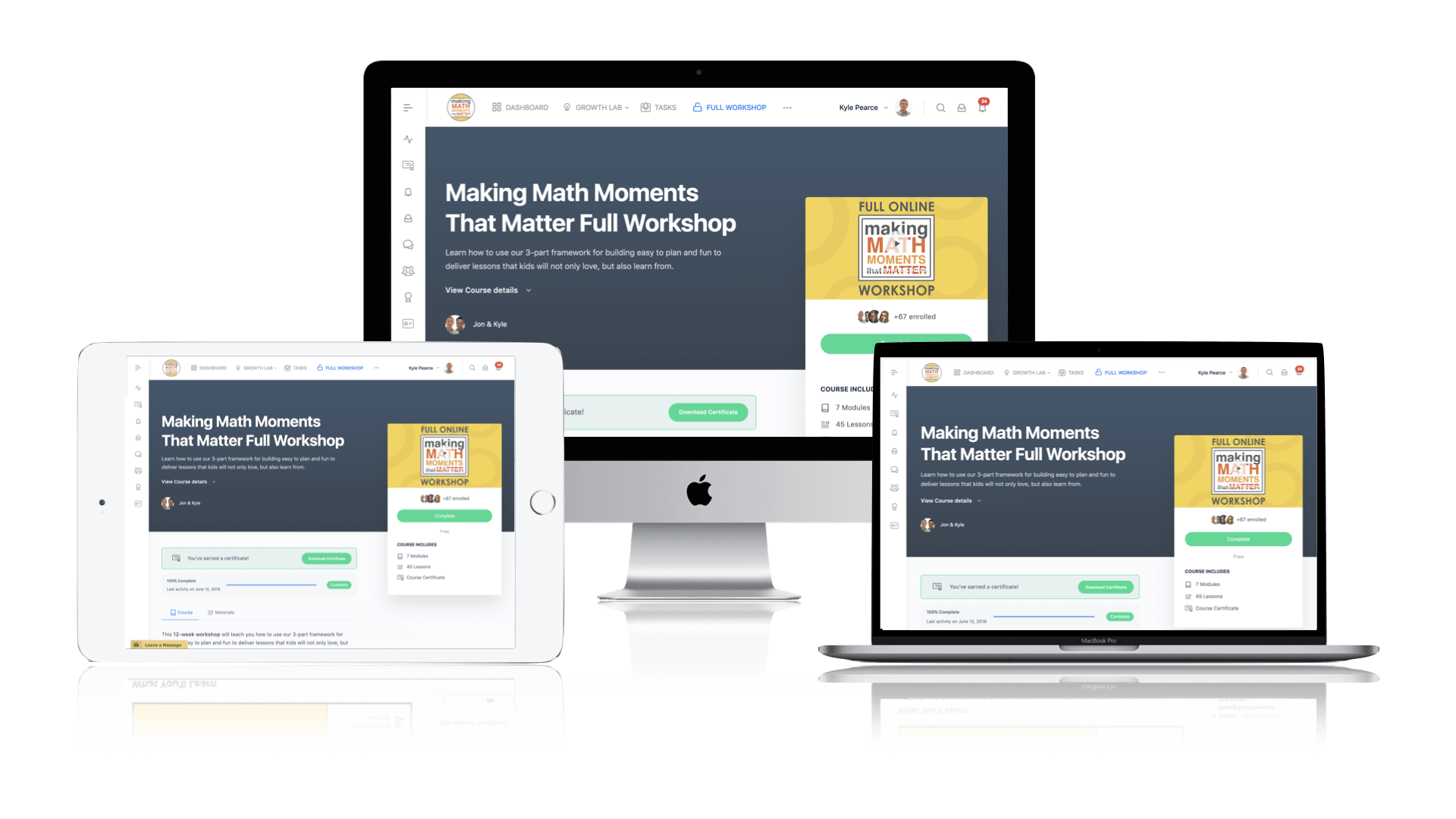
Pedagogically aligned for teachers of K through Grade 12 with content specific examples from Grades 3 through Grade 10.
In our self-paced, 12-week Online Workshop, you'll learn how to craft new and transform your current lessons to Spark Curiosity, Fuel Sense Making, and Ignite Your Teacher Moves to promote resilient problem solvers.
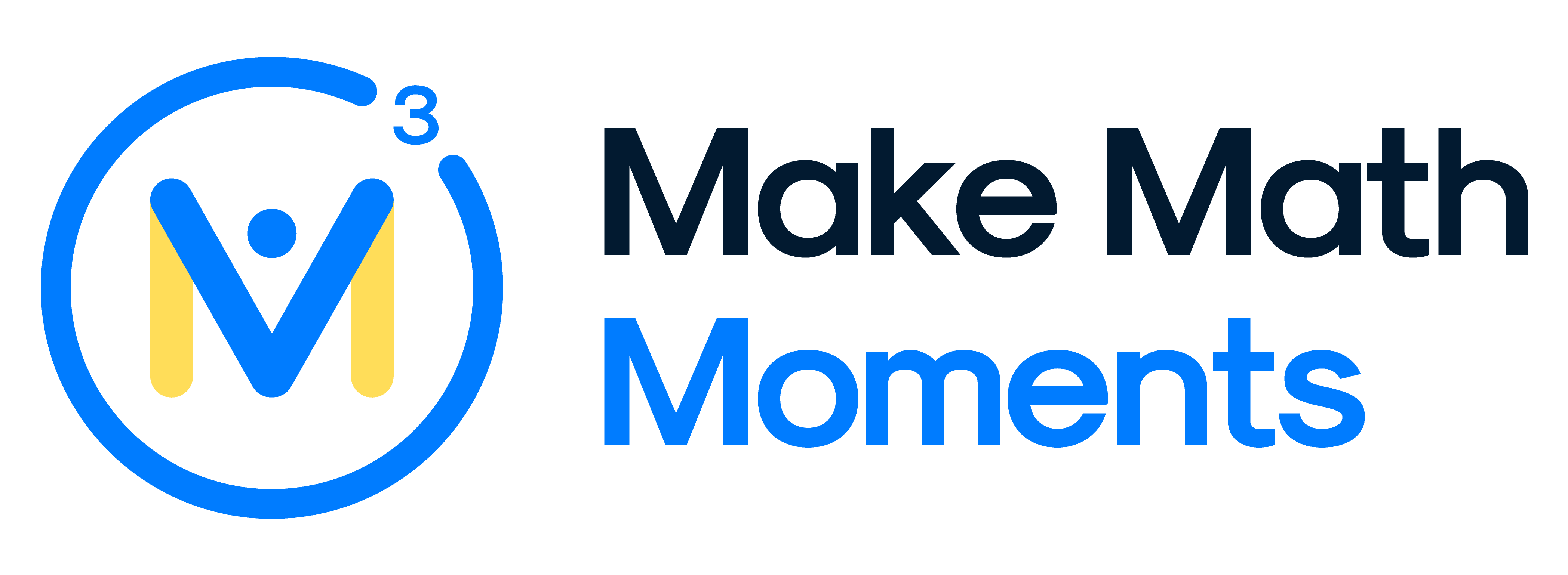

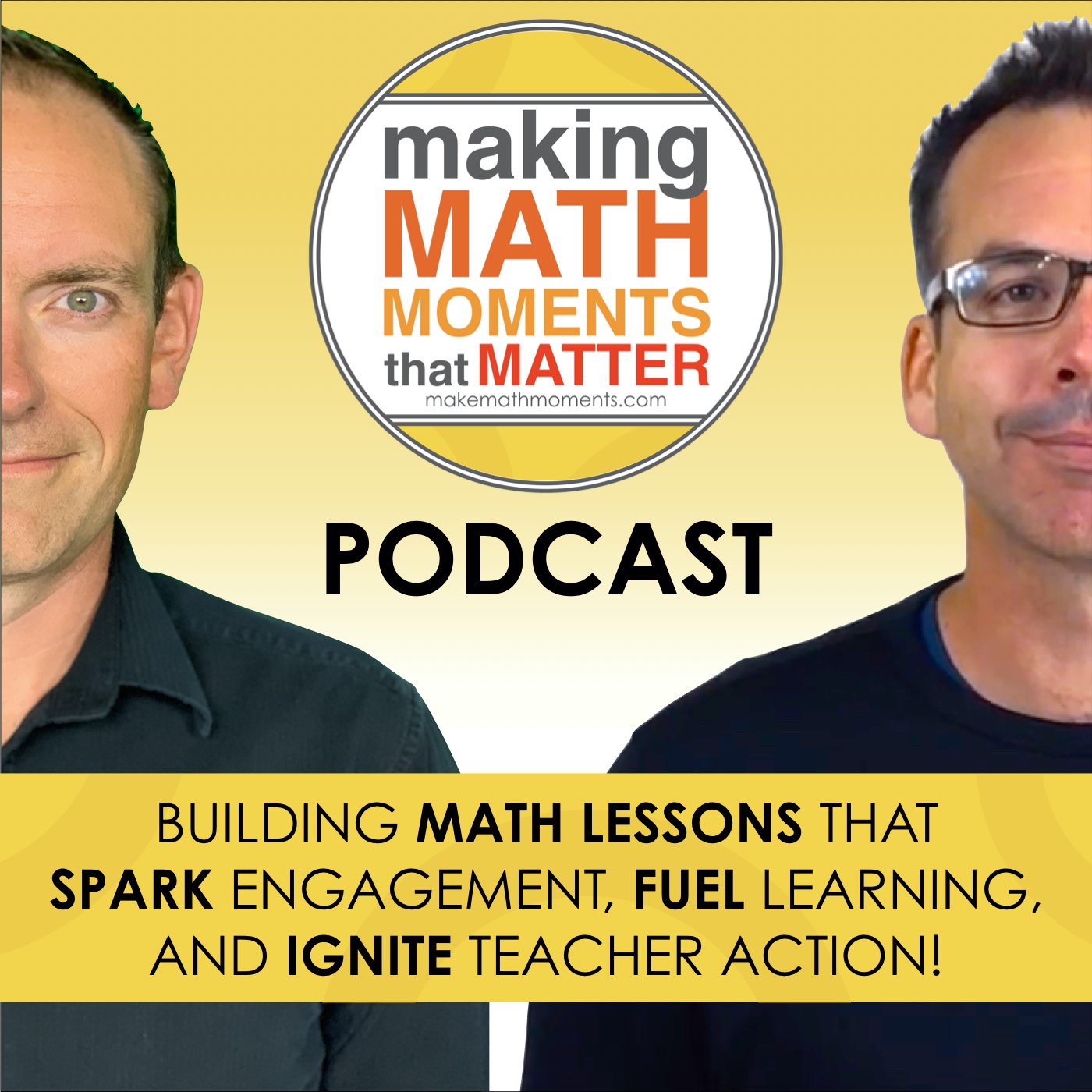

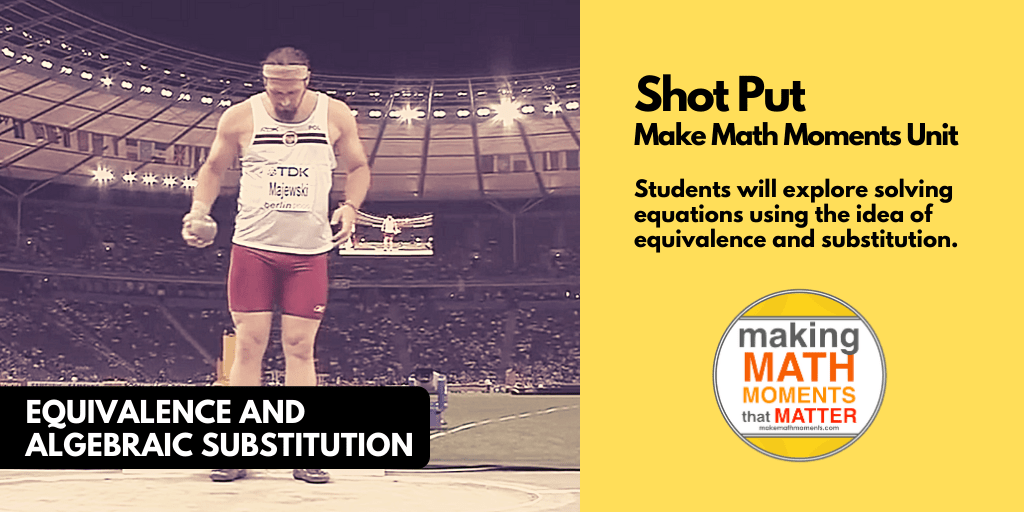
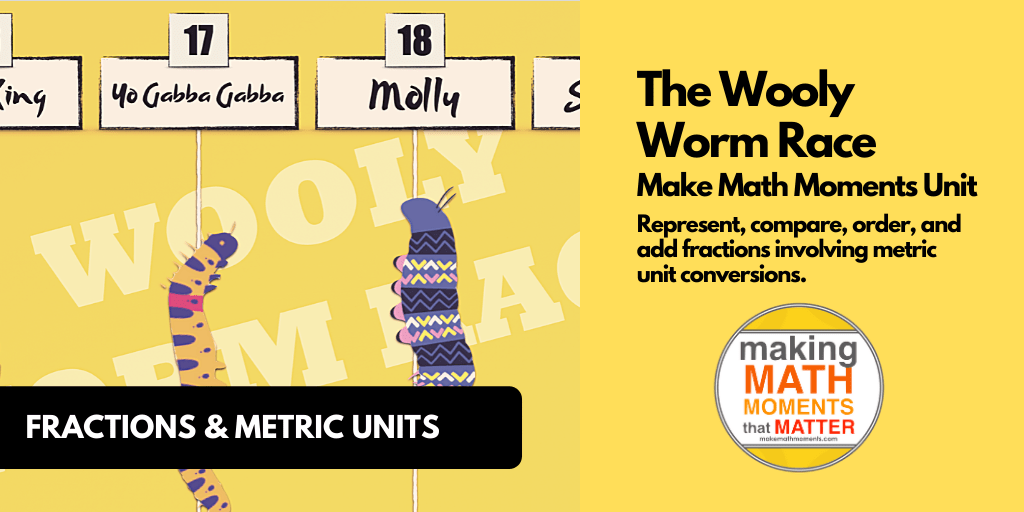
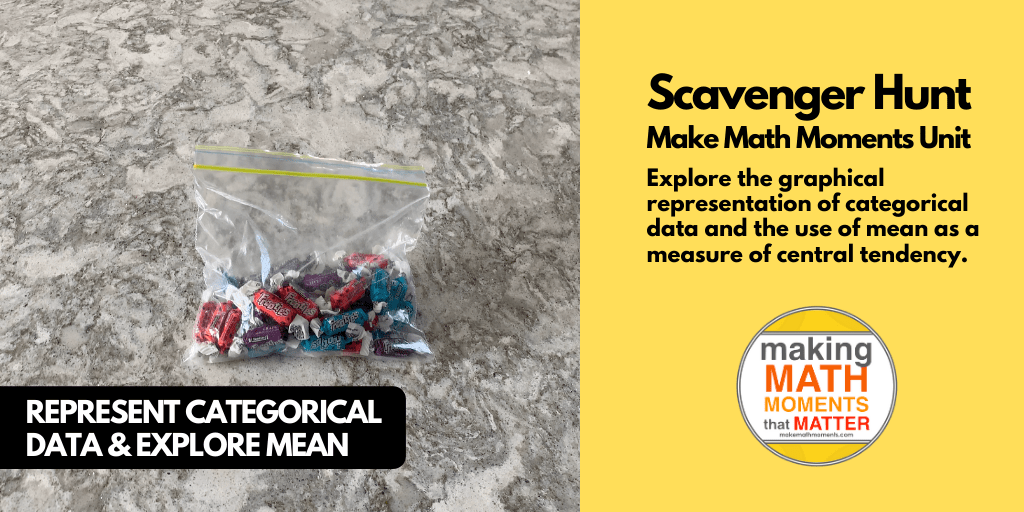
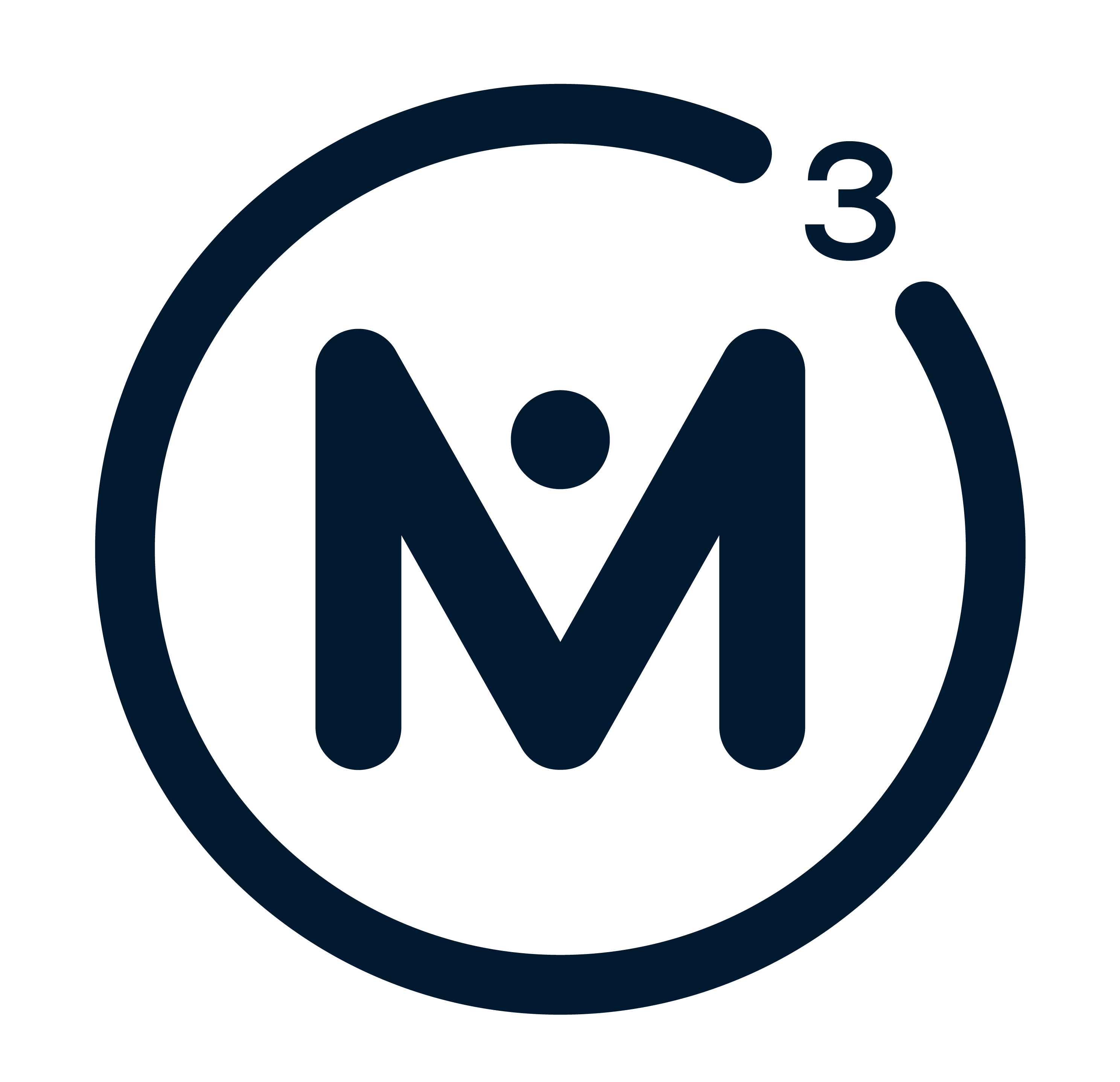
0 Comments